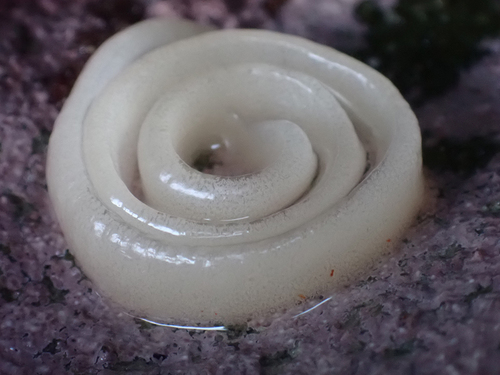StayiNatHome: time for an Easter egg hunt
It's Easter time, and that means eggs. In the Northern hemisphere, where Easter celebrations began, this obsession with eggs makes a lot of sense: it's Spring time there and lots of species are coming out of winter and getting to work making babies. However, here down under, we're watching the sun get lower in the sky each day as winter approaches. You might conclude that including eggs in our Easter celebrations is a bit odd.
That's not necessarily true. There are still plenty of species in New Zealand that are making the most of the last of the good weather to make more babies. With some hunting, you can still find eggs out there in your garden right now (and not just chocolate ones).

@wild_wind found these bird-dropping spider eggs in a garden in Wellington this week. Bird-dropping spiders are famous for hiding in plain sight by mimicking bird droppings.
Easter's also a good excuse for us to take a moment to explore all of the eggs that have been observed so far on iNaturalist NZ–Mātaki Taiao. If we look across all years and months, 327 iNat NZ users have made, and appropriately annotated, 1,235 observations of the eggs of 176 species. Impressive!
Which eggs have been most observed? You might think they'd be bird eggs, but no.
The first birds come in a #14 and #15 (blackbird and thrush eggs). The most observed eggs are of NZ praying manitis and the South African praying mantis. That's perhaps not surprising as they make obvious and durable egg cases in our gardens. After that there's the elephant fish, which makes distinctive egg cases that commonly wash up on NZ beaches. Next most popular are the eggs of four spider species, then the distinctive eggs of speckled welks that show up on beaches. Check out the current top 15 most observed eggs below.

@hfb found this characteristically spiralled egg mass of the limpet Siphonaria obliquata on the rocky shore of Jackson Bay. These elegant, distinctive limpet eggs have currently been observed more than any bird species on iNat NZ.
If we just zoom in to look at March and April, iNat NZ users have still found the eggs of 54 species. NZ's two praying mantis species still top the list, but we've also got three butterflies in the top 15, the cabbage whites, coppers, and monarchs, that are still laying eggs in Autumn. Also found in gardens now are the distinctive egg masses of green planthoppers and green vegetable bugs.

@tony_wills found these green planthopper eggs in a garden in Wellington, and not only that but they also had on them an egg parasitoid wasp, Aphanomerus pusillus, undoubtedly doing nefarious things.

@robert_briggs then made this video of them hatching! Above is just a small gif from the movie. Check out the whole thing on YouTube.
There are still a lot more eggs of NZ species to photograph and share on iNaturalist NZ–Mātaki Taiao. Getting lots of observations of eggs of any one species also fills in gaps in our knowledge of when in the year the species is egg-laying. They also reveal how that timing changes across New Zealand and might be shifting over time. Egg observations are hepful.
You can easily annotate observations with life stage on the iNaturalist NZ–Mātaki Taiao website. On any observation page, you'll find an Annotations section where you can annotate the observation with life stage, alive or dead, and sex. Annotations are also available from the Identify page when you're identifying others' observations. Even if you're not sure of a species identification, it's still helpful to add annotations to an observation.

The Annotations panel, present on all observation pages and all Identify pages on iNaturalist NZ–Mātaki Taiao. When you're signed in, you can help by adding annotations to any observation. The screenshot above is from an observation of a NZ praying mantis, and iNat cleverly knows to display the appropriate life stage options of Adult, Nymph, and Egg..
You can see the results of everyone's hard work annotating life stages when you go to any species page on iNat NZ:

The current life stage graph for the NZ praying mantis, based on the hundreds of iNat NZ observatons that users have annotated with life stage. The eggs (green) peak in April while the nymphs peak in December and January, and the adults peak in March and April..
So Happy Easter everyone. I hope you manage to have as relaxing a break as you can while isolating in your bubbles. If you're out in the garden doing an Easter egg hunt, why not pull out the iNaturalist app and look for some real eggs too.





Comments
Here's a link to see how many eggs we've found while #StayiNatHome: https://inaturalist.nz/observations?place_id=6803&project_id=stayinathome-nz&subview=grid&term_id=1&term_value_id=7&verifiable=any. At the moment it's 31 observations of 15 species, which is completely respectable for bubble living at this time of year.
Add a Comment